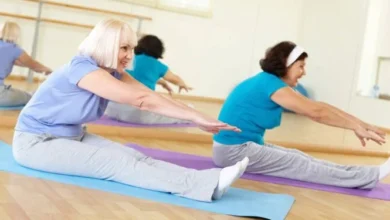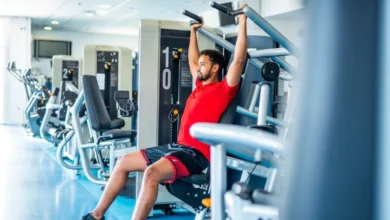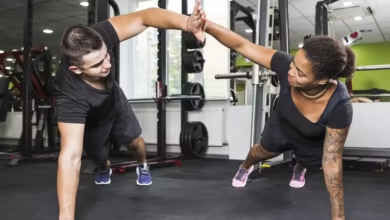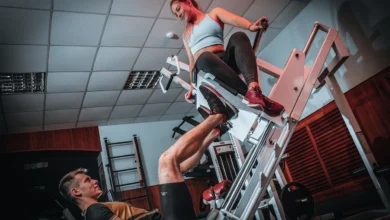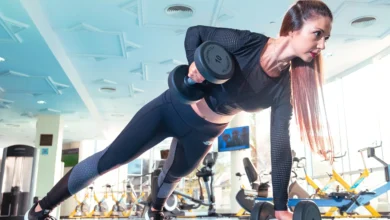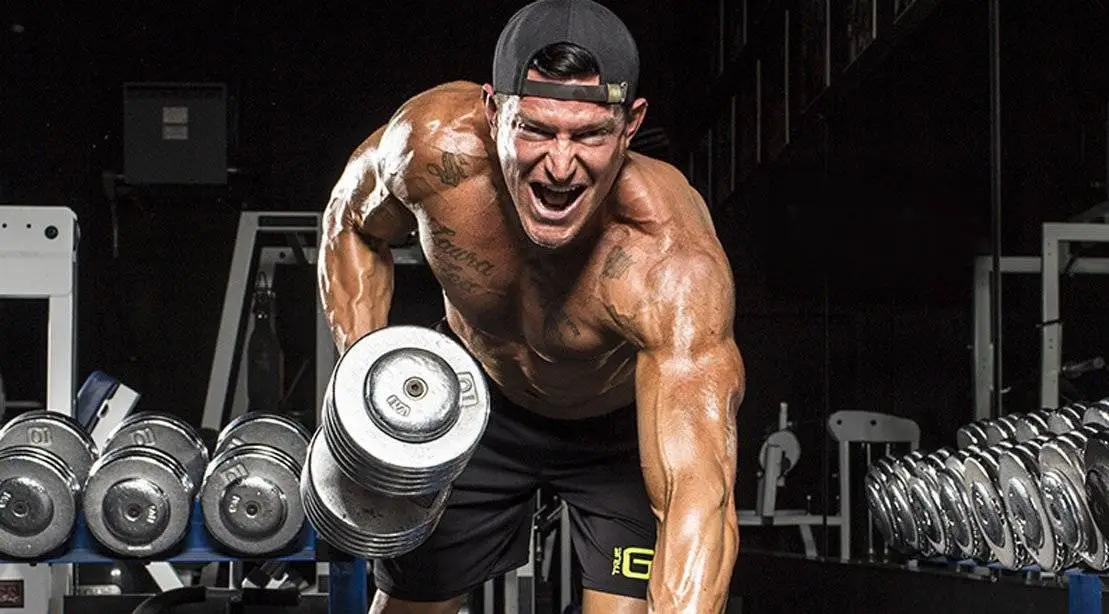
Back training is foundational to any weightlifting program, forming the basis of an aesthetic, strong, and, crucially, functional physique. However, most trainees, especially when performing bilateral exercises like the bent-over barbell row, develop strength and size asymmetries, where the dominant side compensates for the weaker side’s shortcomings. This is where the Single-Arm Row (or Unilateral Row) establishes itself as an irreplaceable exercise.
More than just building muscle mass, this movement serves as a diagnostic and corrective tool. By forcing each side of the body to work in isolation, it exposes hidden weaknesses and promotes symmetrical development and injury prevention. Understanding the biomechanics of the single-arm row is the first step toward building a stable spine and truly balanced back muscles.
READ ALSO:
- Quick Exercise for Lower Back Pain Relief: Simple Moves That Work
- Does Running Help You Lose Weight? How to Start and Progress Without Losing Your Breath
Follow our PAGE
Asymmetry Correction: The Power of Isolation in the Single-Arm Row
Muscle imbalances in the back are not just aesthetic issues; they are functional flaws that increase the risk of injuries to the spine and shoulders. The main cause is muscle compensation in bilateral exercises.
The Problem of Bilateral Compensation
When using a barbell or machine simultaneously with both arms, the stronger side unconsciously takes on a greater load, easing the effort on the weaker side. This vicious cycle exacerbates muscle disparity over time. The Single-Arm Row breaks this chain by completely isolating the action of each side.
Direct Biomechanical Benefits of Isolation
Independent work on each side of the body offers unique benefits:
- Focused Neural Activation: It allows for a superior mind-muscle connection, ensuring that the target muscles (latissimus dorsi, rhomboids, and trapezius) are activated with maximum intensity on both sides.
- Load Equality: The weaker side is forced to lift the same weight and perform the same volume of work as the stronger side, directly stimulating strength and hypertrophy gains precisely where the deficit exists.
- Greater Range of Motion (ROM): Compared to many bilateral variations, the unilateral movement often allows for a deeper stretch of the lats during the eccentric phase and a more intense peak contraction at the end of the movement.
Technique and Core Stabilization
The corrective effectiveness of the single-arm row hinges on strict technical execution. The most popular exercise for this purpose is the Dumbbell Single-Arm Row (Kroc Row/Saw Row).
Essential Posture to Prevent Spinal Rotation
The biggest mistake in the single-arm row is allowing the torso to rotate or excessively lean. Correct posture not only protects the spine but also maximizes the exercise’s benefits:
- Solid Support: Use a flat bench to support the knee and hand of the non-working side. The opposite foot must be firmly on the floor, ensuring a stable base.
- Neutral Spine: Keep your back straight, parallel to the floor, and your gaze slightly down or forward. Core bracing is vital to resist the rotational force of the weight.
The Pull Phase: Prioritizing the Scapula
The movement should be initiated by the scapula (shoulder blade), not the arm.
- Pull the weight towards your hip, not your shoulder.
- Keep your elbow close to your body and focus on “squeezing” the scapula at the end of the pull.
- The movement should be controlled and slow, especially during the lowering (eccentric) phase, to maximize the growth stimulus.
Beyond Aesthetics: The Functional Benefits of Symmetrical Development
Regularly incorporating the single-arm row into your back routine offers rewards that extend far beyond aesthetics.
Spinal Health and Injury Prevention
By correcting strength imbalances, the exercise helps stabilize the muscles supporting the spine. This is crucial for preventing postural issues like functional scoliosis and reducing strain on intervertebral discs, a direct benefit for preventing chronic back pain.
Improved Performance in Bilateral Lifts
With balanced left and right sides, your performance in compound exercises, such as the deadlift and squat, improves significantly. By eliminating the weak link, your overall body strength increases.
Enhanced Shoulder Stabilization
The single-arm row strengthens the muscles that stabilize the shoulder girdle. A stable shoulder is less prone to injuries during overhead movements and heavy lifting, ensuring longevity in your training journey.
Conclusion
The Single-Arm Row is more than an accessory exercise; it is a fundamental pillar of smart training and athletic longevity. By forcing independent work and actively correcting strength and size asymmetries, it ensures your physique develops symmetrically and functionally. For anyone looking to maximize lat development and protect their spine, the single-arm row, executed with impeccable technique and core focus, is indispensable.

Hello! My name is Alan Teixeira and I am passionate about helping people live healthier, more balanced lives. From mindful eating to daily habits that promote physical and mental well-being, I believe that small, consistent changes can lead to powerful transformations.
I created this blog to share practical tips, reliable information, and thoughtful insights that can inspire you to take better care of yourself—with balance, mindfulness, and positivity.
If you are looking to improve your health, nourish your body, and build a lighter, more fulfilling routine, you are in the right place. Welcome!

